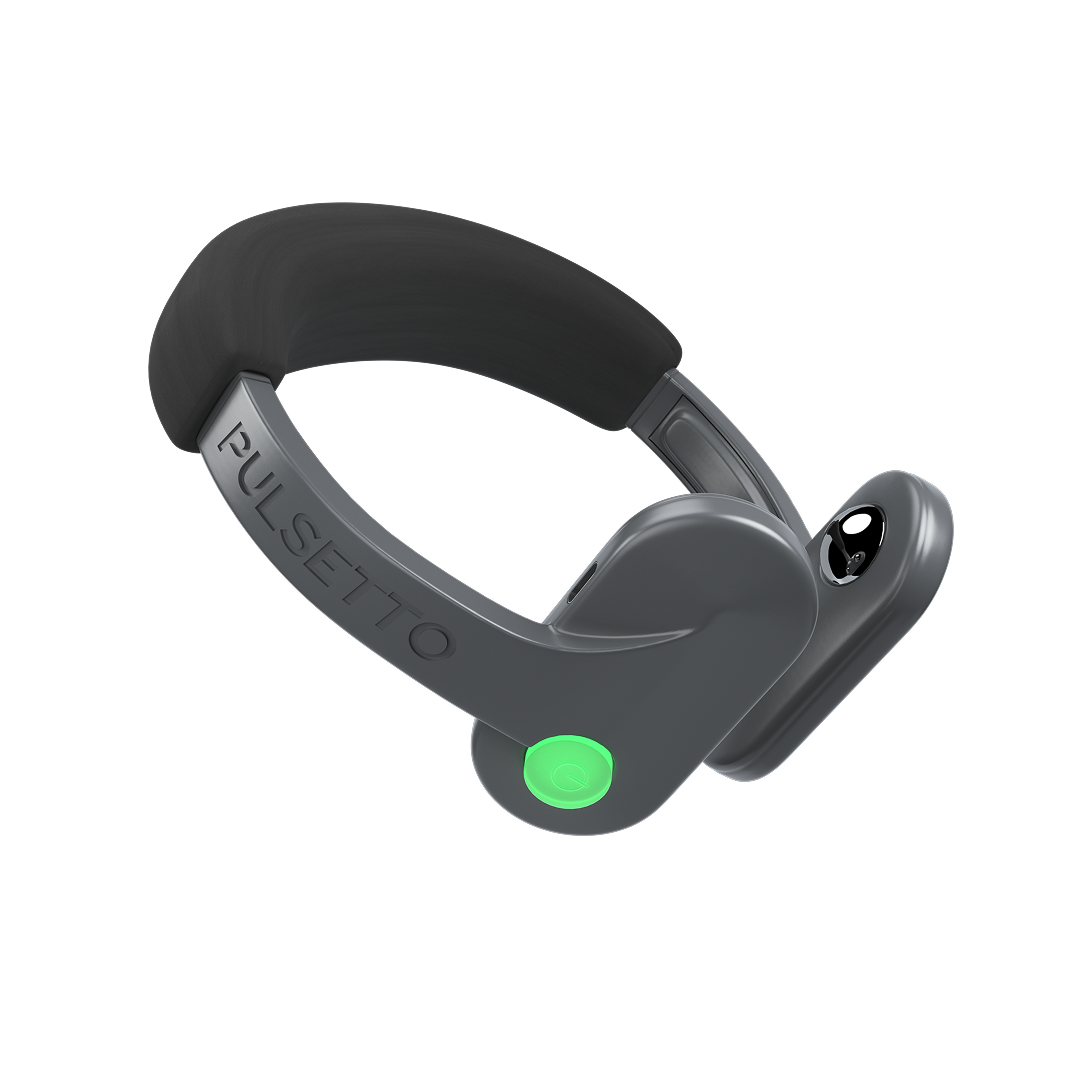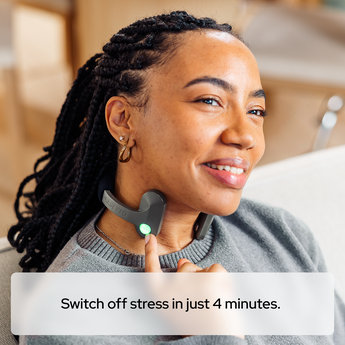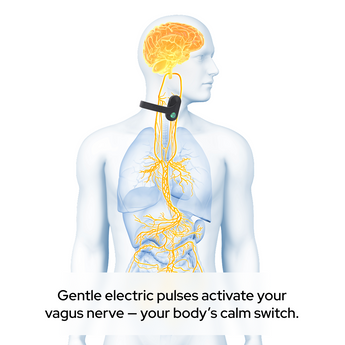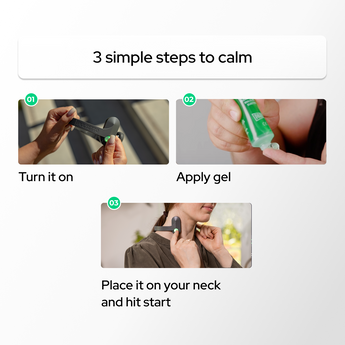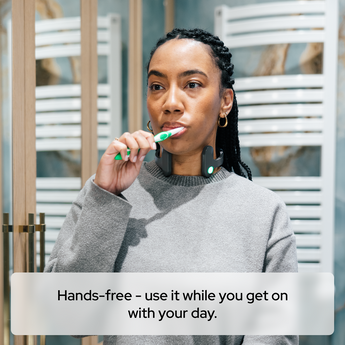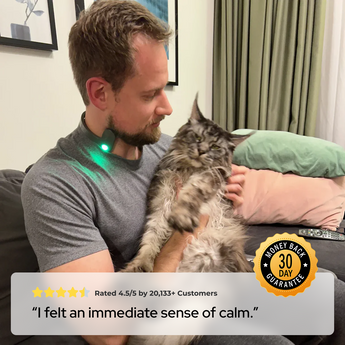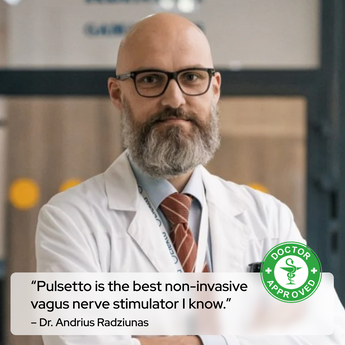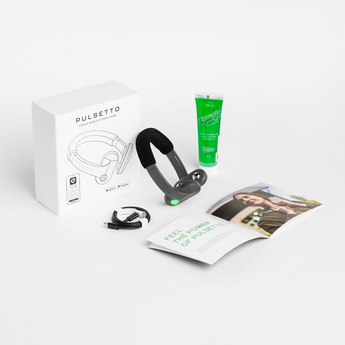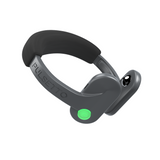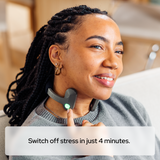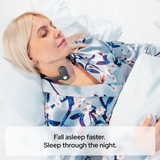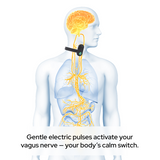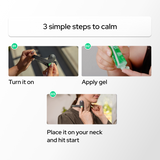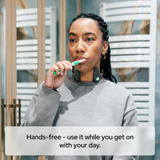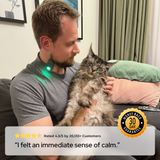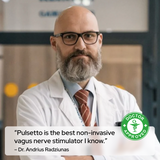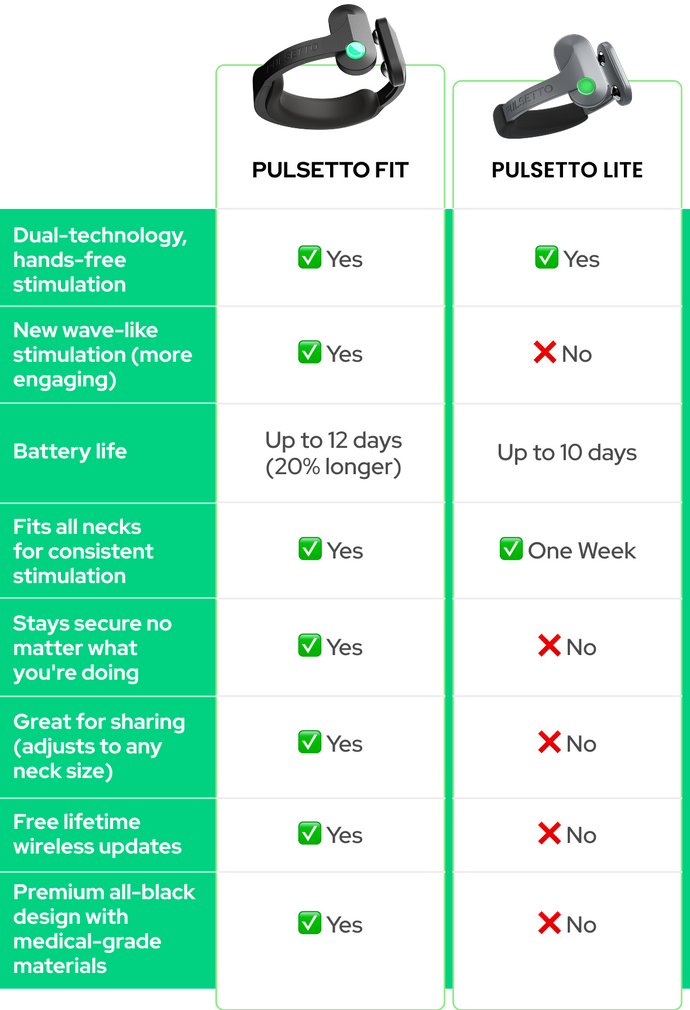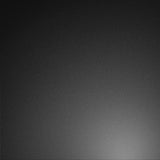The Vagus Nerve and Its Role in Atrophy
The vagus nerve is one of the longest nerves in the body and plays a vital role in various bodily functions. Understanding its role can help us see how stimulating this nerve can aid in combating atrophy.
Overview of the Vagus Nerve’s Functions
The vagus nerve runs from the brainstem through the neck and into the chest and abdomen. It helps regulate functions such as:
- Heart rate
- Digestive processes
- Immune response
Connection Between the Vagus Nerve and Muscle or Neural Health
The vagus nerve influences both muscle and neural health. It helps control muscle movements and can affect the brain's electrical activity. By stimulating the vagus nerve, one can potentially improve muscle recovery and enhance neural function.
How Stimulating the Vagus Nerve Can Influence Muscle Recovery
Stimulating the vagus nerve can help stabilize irregular electrical activity in the brain, which can, in turn, promote muscle recovery. This is especially useful for people recovering from conditions like stroke, where muscle function is impaired.
For instance, research has shown that pairing VNS with rehabilitation exercises can significantly improve arm and hand function in stroke patients.
Non-Invasive VNS Devices
Non-invasive VNS devices are gaining popularity due to their ease of use and effectiveness. These devices offer a practical alternative to surgical implants, making VNS accessible to a broader audience.
Pros and Cons of Non-Invasive VNS Devices
Non-invasive VNS devices come with their own set of advantages and disadvantages. Consider the following before considering purchasing one:
Pros:
- No need for surgery, reducing the risk of complications.
- Portable and easy to use at home.
- Cost-effective compared to surgical implants.
Cons:
- May require frequent use to maintain effectiveness.
- Not as powerful as implanted devices.
- Results can vary from person to person.

Pulsetto, a neck band-like VNS device.
Exercise as a Treatment for Atrophy
Exercise plays a crucial role in treating and preventing atrophy. By engaging in regular physical activity, you can maintain muscle mass, improve strength, and enhance overall health.
Types of Exercises Beneficial for Different Types of Atrophy
Different types of exercises can target various forms of atrophy:
-
Resistance Training: Lifting weights or using resistance bands can help build muscle mass and strength.
-
Aerobic Exercise: Activities like walking, running, and cycling improve cardiovascular health and endurance.
-
Neuromuscular Stimulation: Techniques like electrical muscle stimulation, or EMS, can activate muscles that are difficult to engage through voluntary exercise.
Importance of Personalized Exercise Plans
It's essential to have a personalized exercise plan tailored to your specific needs and goals. Working with a physical therapist or fitness professional can help you develop a program that addresses your unique situation.
How VNS and Exercise Can Work Together to Address Atrophy
VNS and exercise can complement each other in several ways:
- VNS can enhance muscle recovery and neural function, making exercise more effective.
- Exercise can improve overall health and fitness, supporting the benefits of VNS.
- Combining both methods can lead to greater improvements in muscle mass, strength, and function.
Strategies for Incorporating VNS into Exercise Routines
Below are some strategies for incorporating VNS into your exercise routine:
- Use VNS before exercise to prime your muscles and nerves for activity.
- Incorporate VNS sessions during rest periods to enhance recovery.
- Combine VNS with specific exercises that target areas affected by atrophy.

Resistance training can lead to significant increases in muscle size and strength, effectively reversing the effects of atrophy.
Alternative Non-Invasive Treatments for Atrophy
Overview of Other Non-Invasive Therapies for Atrophy
Besides VNS, there are several other non-invasive therapies that can help combat atrophy. Two example methods are discussed below:
-
Electrical Stimulation: This therapy uses electrical currents to stimulate muscle contractions, which can help maintain muscle mass and strength. Devices like transcutaneous electrical nerve stimulation, or TENS, devices are commonly used for this purpose.
-
Ultrasound Therapy: Ultrasound waves can help improve blood flow and promote healing in muscle tissues. This therapy is often used in conjunction with other treatments to enhance recovery.
Complementary Therapies and Lifestyle Changes
In addition to non-invasive treatments, several complementary therapies and lifestyle changes can support muscle health and combat atrophy:
-
Massage Therapy: Helps improve blood circulation and reduce muscle stiffness.
-
Yoga and Stretching: Enhances flexibility and muscle tone.
-
Hydrotherapy: Uses water-based exercises to improve muscle strength and endurance.
Dietary Considerations to Support Non-Invasive Treatments
Proper nutrition plays a crucial role in muscle health. Here are some dietary considerations to support your non-invasive treatments:
-
Protein: Essential for muscle repair and growth. Include sources like lean meats, fish, eggs, and legumes.
-
Omega-3 Fatty Acids: Help reduce inflammation and promote muscle health. Found in fatty fish, flaxseeds, and walnuts.
-
Vitamins and Minerals: Ensure adequate intake of vitamins D, E, and B-complex, as well as minerals like calcium and magnesium.
Pulsetto VNS for Atrophy
Individuals undergoing treatment for atrophy who are seeking a complementary VNS device might consider Pulsetto. This non-invasive device stimulates the vagus nerve, activating the body’s relaxation response, which can support muscle recovery and overall well-being.
What is Pulsetto
Pulsetto is a non-invasive VNS device that can potentially help alleviate atrophy by stimulating the vagus nerve. Its hands-free design makes it convenient to use alongside various activities, such as strength training and aerobic exercise.
How Pulsetto Can Help Alleviate Atrophy
Pulsetto works by stimulating the vagus nerve, which can enhance muscle recovery and improve neural function. This stimulation can help maintain muscle mass and strength, making it an effective tool for addressing atrophy.

Pulsetto may help treat muscle atrophy by stimulating the vagus nerve, which plays a crucial role in muscle health and function.
Why Pulsetto Targets The Neck Area
Pulsetto's focus on the neck area for vagus nerve stimulation is central to its design. The vagus nerve runs from the brainstem through the neck and into the chest and abdomen, making the neck a convenient site for stimulation. This location allows for direct access to the nerve without invasive procedures. The position of the vagus nerve makes VNS via neck stimulation feasible.
Click here to find out how you can get $200 off your Pulsetto device.
Frequently Asked Questions (FAQ)
How might VNS help with atrophy?
VNS may help by promoting neural regeneration and improving muscle function, which could potentially slow or reverse certain types of atrophy, such as muscle or brain atrophy.
What types of atrophy can VNS potentially affect?
VNS is primarily explored for its potential effects on brain atrophy (such as in neurodegenerative diseases) and muscle atrophy due to disuse or other factors.
Are there specific VNS devices designed for treating atrophy?
Some VNS devices are designed for broader therapeutic use, including the management of atrophy-related symptoms, but there may not be devices specifically marketed solely for atrophy.
Are there any known side effects of using VNS for atrophy?
Side effects may include mild discomfort, changes in voice, or tingling sensations. The risk of side effects varies among individuals and should be discussed with a healthcare provider.
How does VNS compare to other treatments for atrophy?
VNS is one of several treatments for atrophy. Other options include physical therapy, medication, and nutritional interventions. VNS may be used in conjunction with these other treatments.




